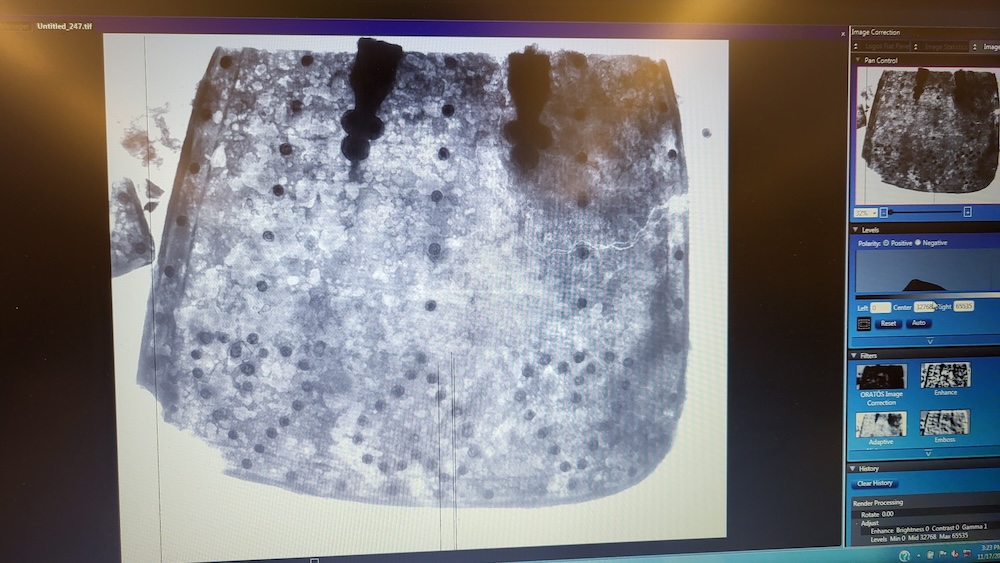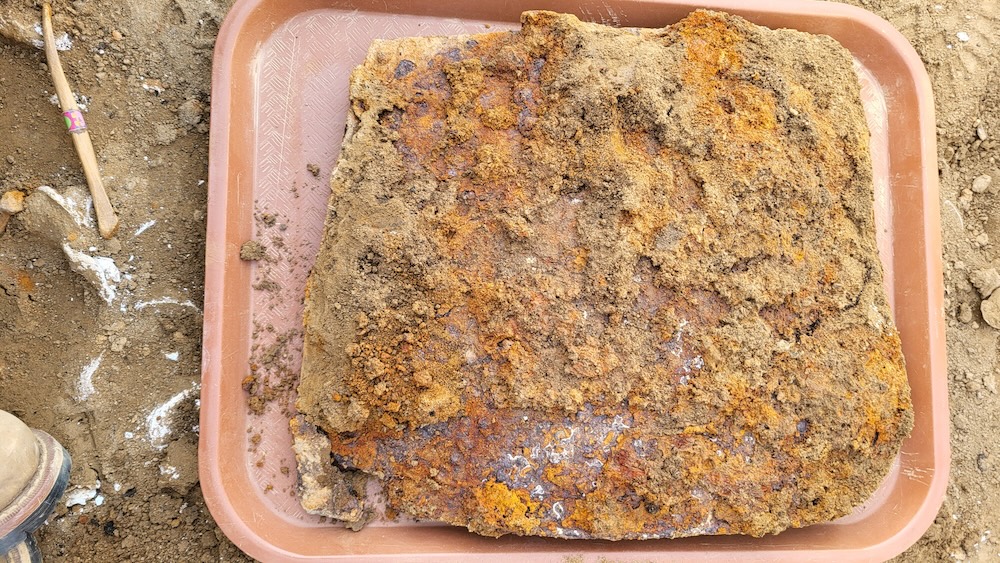
A flattened scrap of metal buried at the site of a 17th-century colonial fort in Maryland was once part of a suit of armor, X-rays reveal.
Archaeologists discovered the slightly concave "slab" that's "about the size of a cafeteria tray" while conducting excavations in a cellar at Historic St. Mary's City, a town in Maryland founded by European colonists in 1634, according to The Washington Post.
"At first it looked like a small piece of iron sticking out of the ground," Travis Parno, director of research and collections at Historic St. Mary's City, told Live Science, "but as we continued digging, it became larger."
After cleaning the mud-caked item, researchers had an idea of what they had pulled from the ground. However, it wasn't until they reviewed X-ray images that they could confirm it was a tasset, a piece of metal from a suit of armor that "was designed to hang from a breastplate and protect the wearer's thighs during battle," according to The Washington Post.
"Seeing the X-ray image of it really brought it to life," Parno said. "We could see the individual bands of steel affixed together and the rivets decorating the piece."
Related: 'Incredibly rare' 2nd-century Roman armor pieced together like an 'ancient jigsaw puzzle'
While researchers are unsure of who actually wore the protective piece, they do know it was brought to the New World by the first European colonists in the mid-1600s when they established St. Mary's City.
It's likely that the colonists ditched the tasset because it was heavy and impractical in a "hot, humid environment," Parno told The Washington Post. "You keep your breastplate, though, because that's protecting your core."

The tasset was just one of many artifacts found as part of an ongoing archaeological project that began in 2021. Researchers also unearthed "a pair of 17th-century scissors, a decorative braid made of metal thread that may have been on a glove or a coat and the outline of a large building the settlers erected shortly after they landed," The Washington Post reported.
In addition to the artifacts, last year researchers discovered the 400-year-old skeleton of a teenager who may have been an indentured servant.
This latest round of excavations has focused only on the cellar, which archaeologists think was used for storage and later served as a "natural repository for trash," Parno told Live Science.
"When the colonists moved here, they needed a place to offload all of their goods," Parno told Live Science. "So, they built a storehouse and a cellar immediately adjacent to it that likely had a roof and walls. Most likely someone chucked [the tasset] in there."







